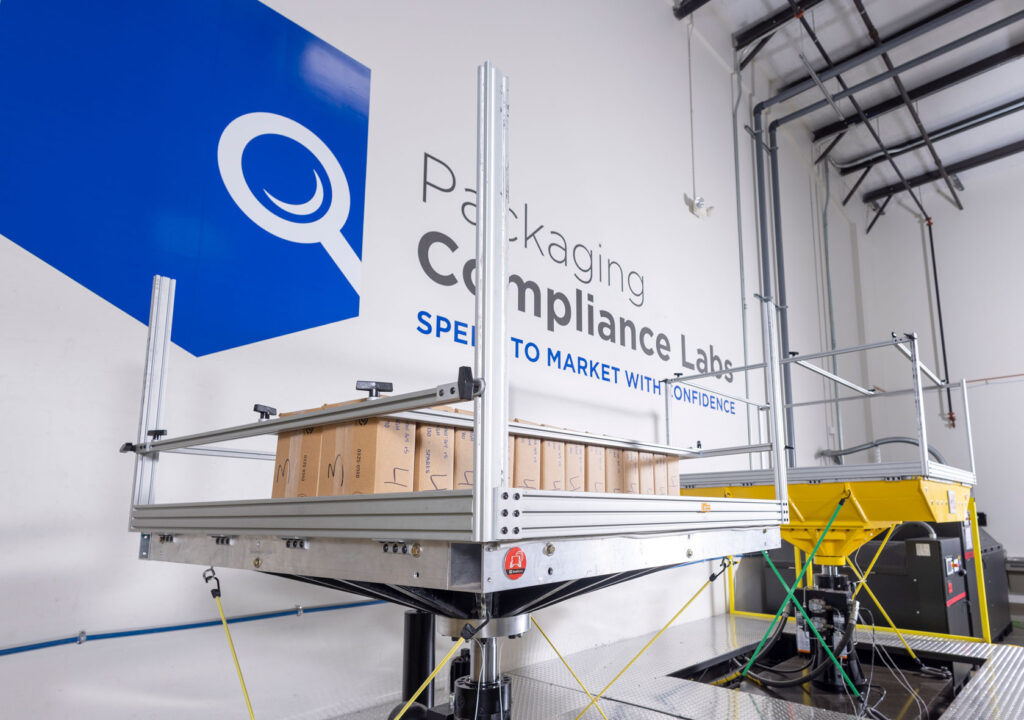

The FDA recognizes ISTA and ASTM standards for distribution testing for sterile medical device packaging validations. The mainstays of sterile packaging distribution testing are familiar to many of us: ISTA 3 Series and ASTM D4169. At Packaging Compliance Labs, however, we are seeing increased requests for ASTM D7386, a transit simulation standard.
There is no consensus on whether ISTA or ASTM standards are the most stringent. For labs seeking to make the best standard of testing recommendation for each product and client situation, knowing the features and nuances within the standards will direct your team with confidence. Let’s review the details of ASTM D4169 and ISTA 3 Series and then consider what’s behind the rise of D7386.
TRANSIT TESTING: ISTA 3 Series OR ASTM D4169
The goal of transit testing is to simulate the actual distribution path the product will experience. There will be climate conditioning and transit simulations. It’s important to have a rationale for why you are using a particular standard and testing protocol. Some products will experience crazy paths, making a custom distribution cycle important to accurate data outputs. Which standard is the best match for that situation?
ISTA 3 Series serves as a general simulation in a series of separate standards that represent various distribution paths. Within a standard there are “Sequences” to identify package type (i.e., standard, small, flat, etc.) The standard includes parameters for both Climatic Conditioning and Transit Simulations. The tests are geared toward ISTA 3A, specifying single-unit packages weighing under 150 lbs. that ship through consumer carriers such as UPS or FedEx. In general, ISTA combines dynamic forces (i.e., shock, compression, etc.), so that is an important distinction to apply when assessing your options.
ASTM D4169 is written to utilize Distribution Cycles (DCs 1-18), representing different distribution paths. Alongside the DCs, Schedules may be applied to address certain packaging specifications (i.e., Porous or non-porous).
The DC Schedules are convenient by allowing certain packaging specifications to be tested, or if no such spec exists, to be omitted. Schedule DC13 also frequently comes into play, because of its applicability to air (intercity) and roadway shipping of “local single package up to 150 lb.” – a frequent common denominator for day-in, day-out projects.
Another distinction of D4169 is three “Assurance Levels” representing intensity of testing, AL1 being the most rigorous, and AL3 the least (i.e., what drop height and/or duration). And, where ISTA combines dynamic forces ASTM individualizes them, making ASTM an ideal choice when doing feasibility studies.
In addition to the differences stated above, it’s important to note that ISTA and ASTM differ slightly in their treatment of labeling sides, edges, and corners, which can affect the performance of the product-packaging system.
WHAT ABOUT ASTM D7386?
On to the uptick in requests for ASTM D7386. Where does it fit in and why? The D7386 standard came about as factors like e-commerce grew in prominence, resulting in the need to accommodate the single parcel delivery system, which is often claimed as a worse-case distribution path for our clients.
The scope of the standard is to give the industry a consistent means of evaluating shipping units as single parcel delivery systems, ensuring that they can withstand the hazards and conditions likely to be encountered during the distribution cycle
As such, D7386 is written for transit simulations of single parcel deliveries under 150 pounds and short durations (up to 48 hours). The standard is segmented by packaging types (TS1 for small, TS2 for large/flat, TS3 for long/narrow, and TS4 for all others.
Still have questions? Reach out to meet with one of our packaging professionals!